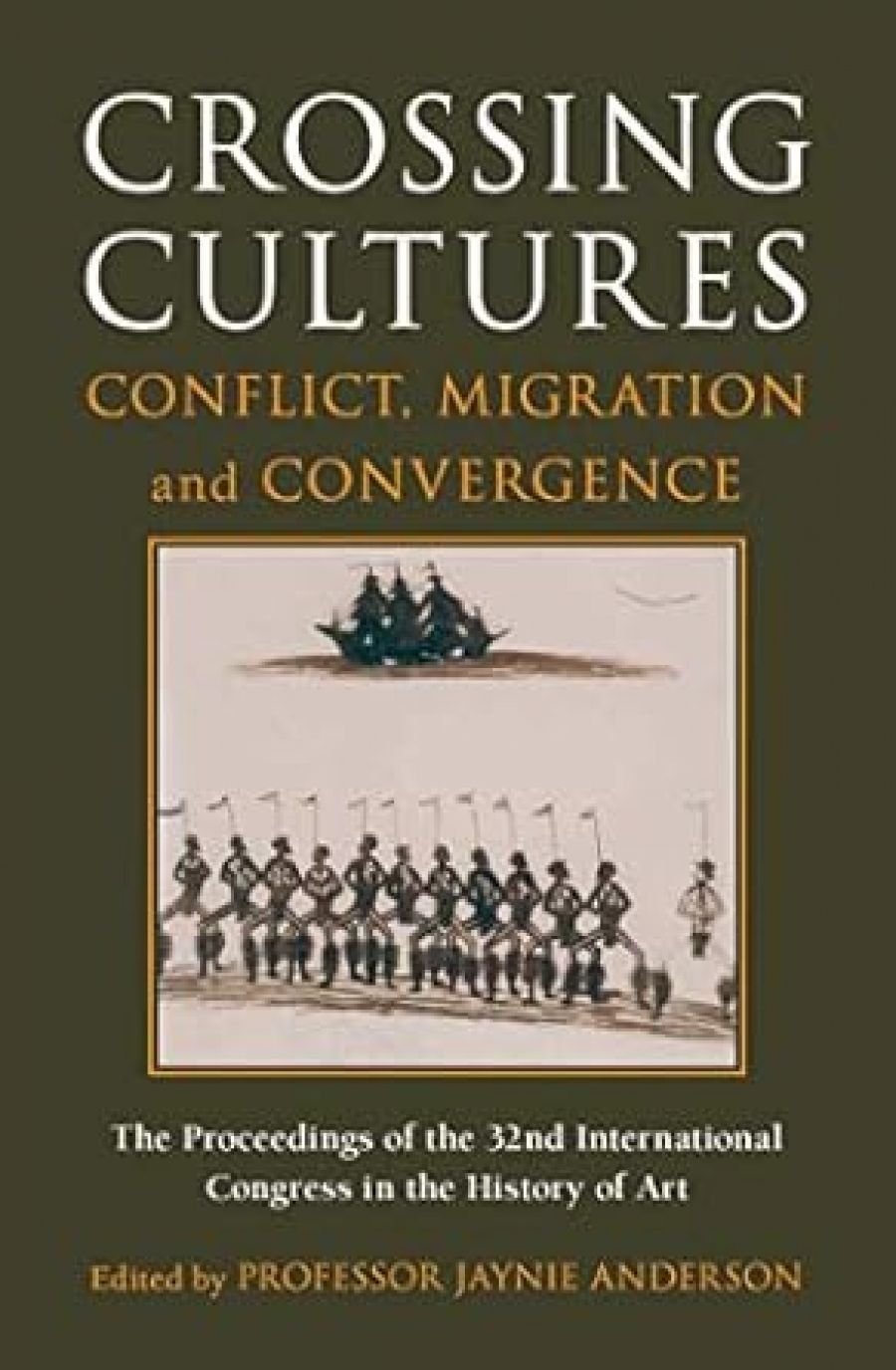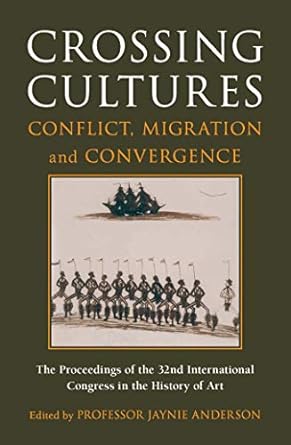
- Free Article: No
- Contents Category: Art
- Review Article: Yes
- Article Title: Notions of oneness
- Online Only: No
- Custom Highlight Text:
The discipline of art history in Australia has passed through four stages. The foundations were laid in the 1940s with the arrival of three eminent émigrés. Ursula Hoff, schooled in the rigours and erudition of the Warburg Institute, came first. Franz Philipp, a Dunera survivor, well educated in the Viennese School, under Julius von Schlosser and others, came next. Then came Joseph Burke, first Herald Professor of Fine Arts at the University of Melbourne, and a product of the Courtauld Institute in London and the Anglophiliacs of Yale. Hoff would become the first trained art historian to work in a public Australian art gallery. Over the years, she made the Prints and Drawings Room at the National Gallery of Victoria a powerhouse of scholarship and connoisseurship. Burke and Philipp joined forces to create the Department of Fine Arts. Burke modestly proclaimed that ‘Franz was the architect and I was the builder’; I suspect that Philipp felt he was both.
- Book 1 Title: Crossing Cultures
- Book 1 Subtitle: Conflict, migration and convergence. The proceedings of the 32nd International Congress of the History of Art
- Book 1 Biblio: Miegunyah Press, $200 hb, 1126 pp
- Book 1 Cover Small (400 x 600):

The second stage came in 1960 with the publication of Bernard Smith’s European Vision and the South Pacific 1768–1850, which remains an unsurpassed monument in Australian art history because of its originality and ground-breaking research. For the first time, the Eurocentric experience of Australian art historians and intellectuals was turned on its head. Instead of looking towards Europe with mouth wide open, Smith reversed the process and seized upon the impact the discovery and exploration of the Pacific had on European sensibilities and taste. The Pacific was no longer peripheral to the march of European civilisation: it played a role within it.
The third stage, also associated with Smith as the foundation professor, was the creation in 1968 of the Power Institute of Contemporary Art at the University of Sydney. Although it had a rocky start with a quarrelsome faculty, it directed attention towards the study of modern art as no other institution had done. Australian public collections had shown a marked hostility towards contemporary art until well after World War II, permanently hobbling their twentieth-century collections of foreign schools.
The fourth stage is unquestionably the 32nd Congress of the History of Art, organised by Jaynie Anderson, the third Herald Professor Fine Arts, and held in Melbourne in January 2008 to wide public and scholarly acclaim. Crossing Cultures, the 1100-page proceedings, represents the lasting distillation of that Congress. To have produced such a record is as remarkable a feat as the organisation of the Congress itself, and a tribute to editor and publisher alike.
What makes this hefty tome more than a record of a conference is Anderson’s insight into what the Australian context and perspective can offer the discipline of art history as a whole. During her tenure in the Herald Chair, Professor Anderson has shown an acute awareness of the evolution of art history in Australia and her contemporary, twenty-first-century insights are built on those earlier stages. Boldly, Anderson saw that Australia’s geographical and cultural location enabled it to take new and daring initiatives that would make art historians, Asian as well as American, European as well as British, think about their purpose and methods in new and inventive ways.
Three specific factors shaped this antipodean view of art history and hence the 32nd Congress and its proceedings. First, Australian art, culture and thought are heirs to the Western tradition. In a post-colonial world, Australia is less a supplicant of the tradition than a contributor to it. From architecture to the performing arts, from music to the visual arts, in literature, history and philosophy, Australian standards and expectations are commensurate with levels in the developed Western world. The majority of Australian art historians are at ease with European or American art and make significant contributions towards its interpretation. The proceedings contain some first-rate papers on European subjects, from Ronald de Leeuw’s tour d’horizon of Dutch seventeenth-century art to Vivienne Gaston’s ‘The Anatomy of Pathos in an Early Drawing by Rosso Fiorentino’.
Secondly, Australia’s proximity to southern and eastern Asia and to the Pacific has generated the possibility of more fluid and more substantive cultural connections. The diverse artistic traditions of these regions offer alternative ways of seeing and believing to the Western tradition. They may shape and influence the reception of that tradition in Australia. Again, the proceedings reflect that vividly, with entertaining studies of both the Taj Mahal and Government House in Calcutta, among many other contributions.
Finally, Australia contains one of the richest indigenous cultural and artistic traditions on the globe and reflects the longest continuous tradition of artmaking known to man. Marcia Langton, in an early and trenchant paper, characterises this tradition as possessing ‘a dynamic identity’, containing within it works of great antiquity and startling contemporaneity. In Crossing Cultures, Australian indigenous art provides an Untergrund, a deep ground of being and reality, not just a leitmotif bouncing along the top.
Anderson’s contention is that Australian art historians can avail themselves of this heady context – conflict, migration and convergence – to practise their trade anew and challenge others to seek out the interpenetration of cultures as a way of enlivening current art history.
One of the most striking examples of this method comes in the section devoted to ‘The Sacred across Cultures’ convened by the Australian art historian Robert Gaston. It contains a consideration of Gertie Huddleston, from the Roper River area in south-east Arnhem land. She is both Aboriginal and Christian – crossing cultures already – and her country, her Dreaming, becomes an image of Eden, reflecting both a spiritual and cultural transformation. The same section contains a detailed consideration by Glenys Adams of the Roman shrines of two seventeenth-century saints – Filippo di Neri at the Chiesa Nuova, and Ignatius Loyola at the Gesù – and how the rooms in which they lived and worked were remade as sacred sites. What links these disparate instances is the role of place in the creation of the sacred.
The charm and excitement of Crossing Cultures lie in the astonishing variety of topics. One is rarely exhausted intellectually, as one is here, by simply reading through the seven contents pages. The papers within each section are brief, focused and generally readable. Past and present are equally rewarded. One of the most interesting applications of this new approach to art history may well be found in contemporary art. Terry Smith, late of the Power institute, now in Pittsburgh, convenes and leads this section, reminding us that ‘contemporaneity is the fundamental condition of our times’. One of the most baffling issues in the art of the last thirty years or so is its capacity to defy normative art history. There seems no plausible structure or sequence of events. The display and installations of art post-1980 in the major museums of modern art in New York, Paris or London seem random, arbitrary, lacking in authority. To subject recent art to an analysis of cross-cultural reference may open up a more coherent view than hitherto.
In Crossing Cultures, art history asks the big question once again. From John Onians’s initially strange rehearsal of ‘neuroarthistory’, we hear the ultimate questions: ‘Why do humans make art? Why do they make it differently in different times and places?’ From Neil MacGregor, director of the British Museum, a central intellectual and cultural figure in a society far more divided by race, religion and caste than Australia, we hear a plea and a belief that, in the great encyclopedic collections of world art, the rending divisions of the world into the Christian West and the Islamic East and South, and the genocidal conflicts engineered by race and religion, meet an ongoing reproof. For these collections represent the ‘oneness of humanity’. The task MacGregor would assign art historians is to find and tell ‘the many stories and many histories that comprise “the oneness of humanity”’.
The surprises of this large and complex book are many – none greater than a 36,000-year-old rock carving from Queensland (photographed by the editor, no less) called Love Magic, with two standing figures of stick-like minimalism. The male figure stretches out his arms in a strange gesture of salutation. It anticipates Leonardo’s Vitruvian Man, whose outstretched arms and legs are the perfect measure of both circle and square. You will never be able to think of that familiar image again without recalling the millennia-old Aboriginal image. Your culture has been crossed, and you stand enriched by it.


Comments powered by CComment